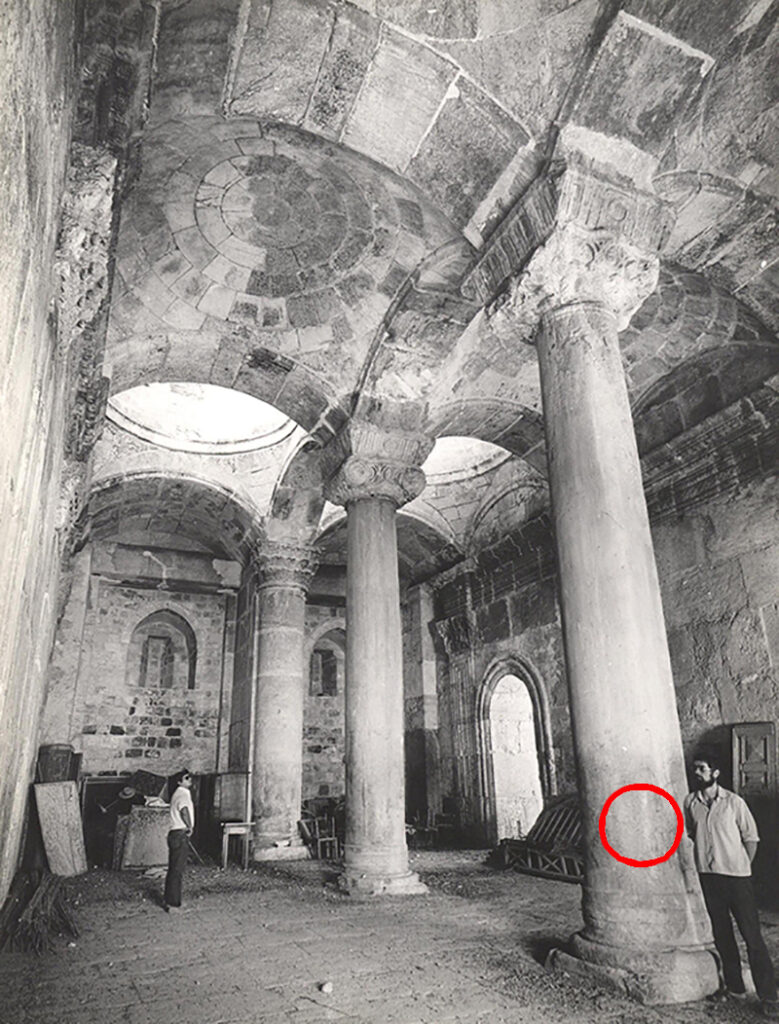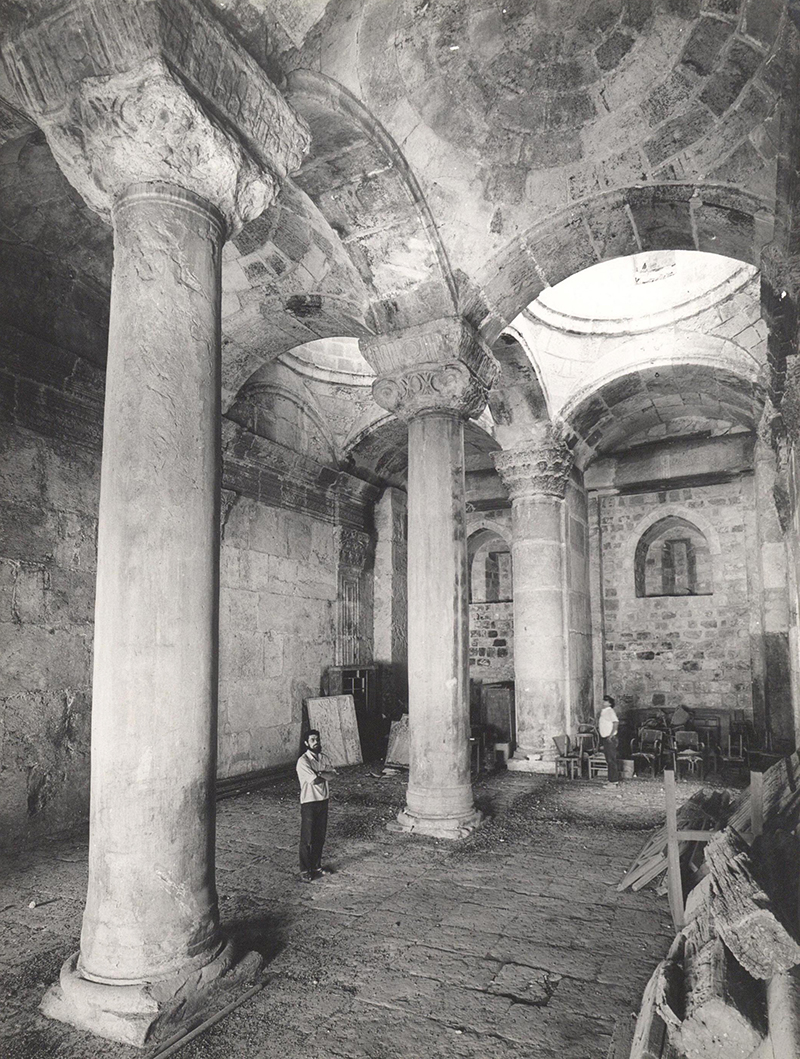Arnon Segal, a journalist-friend from Jerusalem, sent me a link to a most interesting article he wrote for the Makor Rishon newspaper (Hebrew).
“A Muslim acquaintance from abroad, a lover of Israel and a devout Zionist named M.A. [name withheld for obvious reasons], visited the Temple Mount in recent years and photographed up close a series of sites that are not accessible to Jews there, and the Gate of Mercy in particular [The Golden Gate is called Sha’ar haRachamim, “The Gate of Mercy” in Hebrew]. He provided rare photos from there, including a sensational discovery that will be described below.”
Arnon and I met in Jerusalem, and he published articles about my work on the Temple Mount in this newspaper. In this present article he writes:
“The gate complex became a mosque almost five years ago, and since then changes have been made to it that pose a great danger to the antiquities located there. The Gate of Mercy, as it is called today, dates to the seventh century AD. However, researchers such as archaeologist Leen Ritmeyer are convinced that a gate has stood in this place since the days of the First Temple, in the seventh century BC, the days of Hezekiah. Ritmeyer suggests that the Mercy Gate is the gate known in the Mishnah as “the Shushan Gate”, through which the scapegoat went out into the desert, and from there the Red Heifer was taken to the Mount of Olives.”
The inscriptions that probably date back to the 9-11th century prove that Jews went up to the Temple Mount on, what must have been for some, a once-in-a-lifetime pilgrimage.
In the 19th century, Félicien, or Félix de Saulcy, a French archaeologist, discovered an inscription in the underground Double Gate passageway. Jonah and Shavtia his wife, who had travelled from Sicily, wrote their names on the inside wall, with the addition of “strong in life”, meaning that they had prayed for a long life. Unfortunately, this inscription has recently almost been erased by a layer of new plaster.
In 1908, a well-known Jewish researcher discovered another Hebrew inscription on the southern wall of the Golden Gate, mentioning Abraham son of Loles, followed by the same formula “I will be strong”. This phrase means “getting stronger” and shows that Jews went up to the Temple Mount to give thanks for recovery of an illness.
“Benjamin of Tudela, who visited the Holy Land in the 12th century, mentioned this custom in the underground structure of Solomon’s Stables in the south of the mountain: “And there in Jerusalem, by the house where Solomon had horse stables built… the Jews who come there write their names on the wall.” “All of these appeared in the researchers’ articles in the last 170 years. Photographs provided by M”A from the Gate of Mercy structure recently prove that there are other ancient Hebrew inscriptions in the place, which the archaeological research has not caught up with yet .”
Photographs of the newly discovered inscriptions can be seen in the article, especially those written on the first column inside the gate.
“The archaeologist Tzachi Dvira believes that he was able, after seeing the photos taken at the site, to decipher some words from the inscriptions on the column. He reads there, among other things, the words “I have overcome”, and then a blurred word that may include the letters “for Bacher”. Next to these, the name “Reuben son of Machir” and the word “Degel- flag” were engraved on the column. Below them appears the name “Yosef (Joseph) son of …”, with his father’s name that is possibly Aryeh. It seems that another inscription appears beneath it in which the name “Yosef” is mentioned a second time, as well as other names, which are more difficult to identify.”

The letters are written in the so-called square Hebrew script that has been in use for many centuries. Even a pupil at a modern Hebrew school can easily read them. However, as Jews were allowed on the Temple Mount during the Early Muslim period from 838-1099 AD, but not afterwards, it is assumed that these newly discovered inscriptions date from that period.
Segal concludes his article with these words:
“So, in the heart of very sad days in our history, we received greetings from Jews who a thousand years ago went up to the Temple Mount freely. They engraved their names in the Gate of Mercy for eternal remembrance in the Temple of God.
“They roamed the place undisturbed, under the auspices of the very kind Muslim government of the 11th century, while we – the 21st century citizens of supposedly free Israel – are not allowed to go there.
“How did we come to terms with a reality where an address located in the heart of the free capital of Israel, not in Tehran or Baghdad, needs a Muslim to come here from abroad to reveal it to the world for the first time?”

